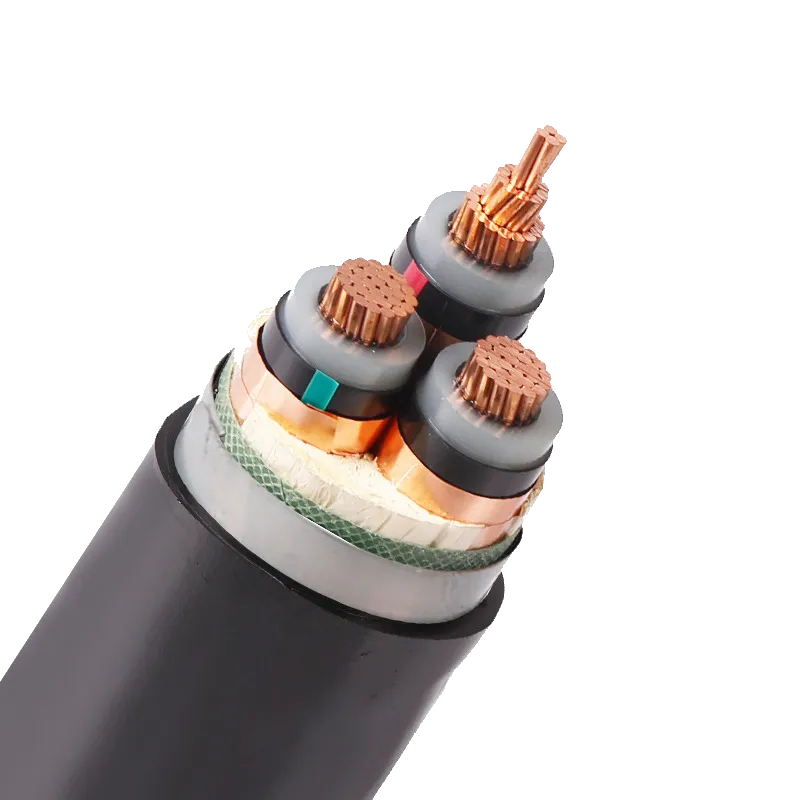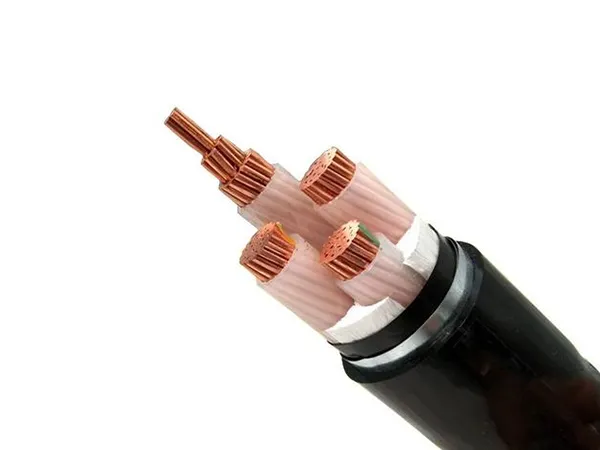Understanding Voltage Levels and Cable Types in China's Power Industry
Time: 2025-03-20 08:43:39
Source: Henan Province Jianyun Cable Co., Ltd.
In China's electrical power industry, voltage levels play a critical role in determining the type of cables used and their applications. Common voltage grades include 220V, 380V, 1kV, 10kV, 35kV, 110kV, 220kV, and 500kV. These are broadly categorized into three groups: low voltage, medium voltage, and high voltage. This article explores the differences between low-voltage and high-voltage cables, their structures, uses, production processes, and how to distinguish them in practice.

Voltage Classifications in China
-
Low Voltage (LV): Typically 220V and 380V, primarily used for household electricity and small-scale applications.
-
Medium Voltage (MV): Ranges from 1kV to 35kV, serving as an intermediary for industrial and local distribution networks.
-
High Voltage (HV): Starts at 35kV and above (e.g., 110kV, 220kV, 500kV), mainly employed for long-distance power transmission.
These classifications dictate the design and construction of cables to ensure safety and efficiency across various applications.
Structural Differences Between Cable Types
The construction of cables varies significantly depending on their voltage rating. Below is a breakdown of their layers:
-
Low-Voltage Cables:
-
Structure (from inner to outer): Conductor, insulation layer, steel tape (optional), protective sheath.
-
Key Feature: Simpler design, often lacking additional shielding or armoring layers. Many low-voltage cables omit the steel tape for cost and flexibility.
-
High-Voltage Cables:
-
Structure (from inner to outer): Conductor, insulation layer, inner sheath, semiconductor layer, shielding layer, filler (armoring), outer insulation.
-
Key Feature: More complex with additional layers like semiconductor and shielding layers to handle higher electrical stress. The insulation layer is significantly thicker than in low-voltage cables.
The primary distinction lies in the presence of semiconductor and shielding layers in high-voltage cables, which enhance insulation and protect against electrical interference. This makes HV cables thicker, more robust, and technologically advanced.

Applications of Low- and High-Voltage Cables
The intended use of a cable is closely tied to its voltage capacity:
-
Low-Voltage Cables:
-
Voltage Rating: Up to 450V/750V.
-
Uses: Widely applied in electrical equipment, including fixed installations (e.g., plastic-insulated cables for industrial setups), mobile applications (e.g., rubber-sheathed cables), and building installations (e.g., main power circuits, branch lines, and specialized flat cables for elevators).
-
High-Voltage Cables:
-
Voltage Rating: 35kV and above.
-
Uses: Employed by power utilities for electricity transmission and voltage transformation in substations. Voltages below 220kV are common in urban networks, while ultra-high voltages (e.g., 500kV) are used for long-distance transmission. These cables require specialized installation and maintenance by trained professionals.
Production Processes
The manufacturing techniques for low- and high-voltage cables differ due to their structural and performance requirements:
-
Low-Voltage Cables:
-
Materials: Produced using standard polyvinyl chloride (PVC) or crosslinked polyethylene (XLPE).
-
Types: Available in both standard and crosslinked variants.
-
Process: Relatively straightforward, with no mandatory requirement for cable terminations (end connectors).
-
High-Voltage Cables:
-
Materials: Exclusively use high-density crosslinked polyethylene (XLPE) for insulation.
-
Process: Requires advanced techniques like three-layer co-extrusion for 6kV–35kV cables. Strict production standards are followed, and cable terminations must be meticulously crafted to ensure reliability.
-
Laying Requirements: More stringent than low-voltage cables due to safety and performance demands.
How to Differentiate Low- and High-Voltage Cables
Distinguishing between cable types is straightforward with these practical methods:
-
Structural Inspection:
-
High-Voltage Cables: Multiple layers visible upon peeling the outer sheath, including armoring, shielding, insulation, and conductors.
-
Low-Voltage Cables: Simpler, with only insulation or conductors beneath the outer layer.
-
Insulation Thickness:
-
Low-Voltage Cables: Insulation typically less than 3 mm thick.
-
High-Voltage Cables: Insulation exceeds 5 mm, reflecting the need for greater electrical resistance.
-
Labeling Information:
-
Most cables feature a nameplate or printed details on the outer sheath, listing parameters such as model, cross-sectional area, rated voltage, and length.
Comparison Table: Low-Voltage vs. High-Voltage Cables
|
Feature
|
Low-Voltage Cables
|
High-Voltage Cables
|
|
Voltage Range
|
Up to 450V/750V
|
35kV and above
|
|
Layers
|
Conductor, insulation, optional steel tape, sheath
|
Conductor, insulation, semiconductor, shielding, armoring, outer insulation
|
|
Insulation Thickness
|
< 3 mm
|
> 5 mm
|
|
Applications
|
Household, industrial, mobile equipment
|
Power transmission, substations
|
|
Materials
|
PVC or XLPE
|
High-density XLPE
|
|
Production Complexity
|
Simple, no mandatory terminations
|
Complex, strict termination required
|
Safety Considerations
While high-voltage lines are less common in daily life, medium- and low-voltage cables are ubiquitous. To ensure personal safety, always opt for nationally certified cables that meet quality standards, especially for household or industrial use. Proper selection and installation are critical to preventing electrical hazards.

Conclusion
Understanding the differences between low- and high-voltage cables is essential for professionals and consumers alike. From their layered structures to their specific applications and production methods, these cables are tailored to meet the demands of China's diverse power infrastructure. By recognizing their characteristics—whether through visual inspection or technical specifications—users can make informed decisions to ensure safety and efficiency in electrical systems.
Keywords: Low voltage, high voltage, medium voltage, cable structure, power transmission, insulation, safety, China power industry



